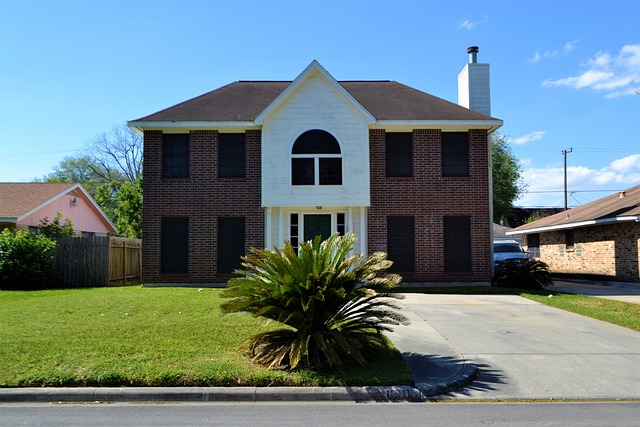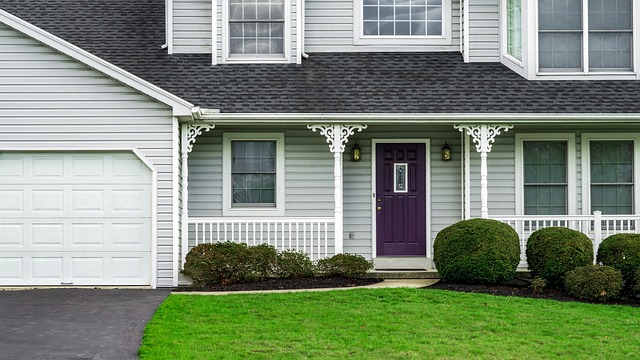Concrete driveways are a popular choice for homeowners due to their durability, versatility, and low maintenance. Customizable finishes and designs complement any architectural style. Designing should enhance curb appeal with clean lines for modern homes or classic patterns for traditional homes. Installation requires careful preparation, including site grading, reinforcement, pouring, and finishing. Maintenance involves regular cleaning, sealing every 3-5 years, proper drainage, and quick repairs to cracks or chips.
“Elevate your outdoor space with a professionally designed and installed concrete driveway—a durable, low-maintenance investment that enhances any property. This comprehensive guide explores the essentials of concrete driveway design, from understanding the superior materials and their longevity to crafting your dream layout. We’ll walk you through the step-by-step installation process, highlighting best practices, and provide vital maintenance tips to ensure your concrete driveway stands strong against time’s test. Discover how to transform your entranceway.”
- Understanding Concrete Driveways: Materials and Durability
- Designing Your Ideal Concrete Driveway Layout
- Installation Process: Step-by-Step Guide and Best Practices
- Maintenance and Longevity: Ensuring Your Driveway Stands the Test of Time
Understanding Concrete Driveways: Materials and Durability

Concrete driveways are a popular choice for many homeowners due to their durability and versatility. They’re built using a mix of cement, aggregate (such as gravel or sand), water, and sometimes admixtures to enhance properties like workability or freeze-thaw resistance. This robust material can withstand heavy traffic, extreme weather conditions, and the natural wear and tear that comes with daily use, making it an excellent investment for your property’s value.
When installed properly, concrete driveways offer a long-lasting solution that requires minimal maintenance. They are highly customizable, allowing you to choose from various finishes, textures, and even incorporate decorative elements like stamped designs or embedded accessories. This versatility means a concrete driveway can complement any architectural style or landscape design aesthetic.
Designing Your Ideal Concrete Driveway Layout

When designing your ideal concrete driveway layout, start by envisioning the space as a canvas for your home’s curb appeal. Consider the overall style and architecture of your property to ensure your driveway complements its aesthetics. For instance, if your home exudes modern elegance, opt for clean lines and minimalist designs with smooth curves. Traditional homes might benefit from classic patterns featuring intricate grids or custom shapes.
Think about functionality as well. Measure the available space and consider vehicle access, parking angles, and any additional features like a driveway entrance or decorative elements. Use these measurements to create a scale drawing, enabling you to experiment with different layouts virtually. This process allows for informed decisions, ensuring your concrete driveway not only looks stunning but also functions flawlessly for years to come.
Installation Process: Step-by-Step Guide and Best Practices

Installation Process: A Step-by-Step Guide for Concrete Driveways
The installation process for a concrete driveway involves several meticulous steps to ensure durability and aesthetic appeal. It begins with thorough site preparation, including grading and compacting the base to create a level surface. After laying out the driveway design, professionals will dig trenches for drainage systems to prevent water accumulation. Next, they install rebar reinforcement to enhance structural integrity. This is followed by pouring concrete, ensuring proper vibration for even settling. Once set, the surface is finished with various techniques like floating, troweling, and texturing for a smooth, durable finish.
Best practices dictate adherence to local building codes and weather conditions. Concrete should be poured when temperatures are suitable, typically above 50°F (10°C), to ensure proper curing. Regular inspection during installation is vital to address any issues promptly. Proper jointing and sealing are essential long-term maintenance steps to prevent cracking and water damage.
Maintenance and Longevity: Ensuring Your Driveway Stands the Test of Time

A well-designed and installed concrete driveway is an investment that requires minimal maintenance to ensure longevity. Regular cleaning and sealing are key to protecting your concrete driveway from stains, cracks, and damage caused by weather conditions. Annual sealing every 3-5 years can significantly extend its lifespan by creating a protective barrier against moisture, oil, and other contaminants.
Proper drainage is another crucial aspect of maintaining a durable concrete driveway. Ensuring water flows away from the surface instead of pooling can prevent erosion and potential cracks. Regular inspection for any signs of damage or uneven spots should be part of your routine maintenance. Prompt repair of small issues like cracks or chips will help preserve the overall aesthetics and structural integrity of your concrete driveway, ensuring it stands strong against the test of time.
A professionally designed and installed concrete driveway enhances your property’s curb appeal and offers a durable, low-maintenance entrance. By understanding the materials, designing with your lifestyle in mind, and following best practices during installation, you can ensure your concrete driveway stands the test of time. Regular maintenance will further safeguard its longevity, providing you with a long-lasting and stylish addition to your home.
